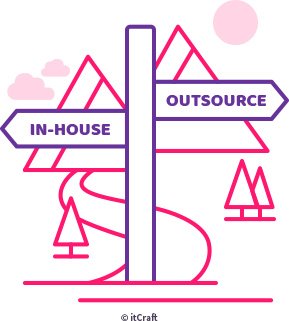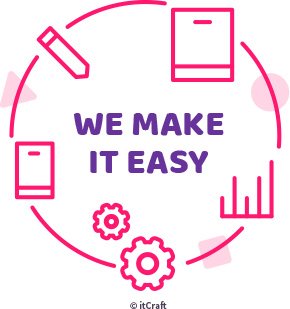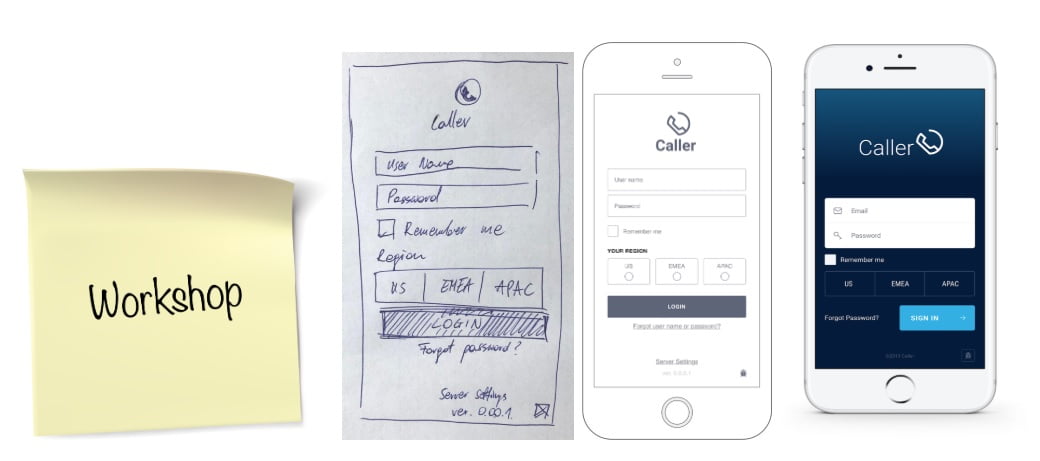Technology outsourcing. Does it make sense for startups?

Bartosz Pieślak

It can be very counterintuitive to consider this pair: startups and outsourcing. Naturally, we think about technology outsourcing as something only bigger companies can afford. And even with the money aspect aside, a startup by definition should be built around an idea and aim to keep the know-how and skillset safely in-house. Especially when it comes to building new technology.
Table of contents
So why do so many new businesses use outsourcing? And why do they often say that getting the right support from the outside helped them achieve major milestones?

Here are some of the key advantages of outsourcing startup founders often name:
- Learning new skills can take a long time so often outsourcing is the only way forward;
- Training in-house staff can be more expensive than paying external teams for one-off projects;
- Outsourcing work is a good exercise in drilling down into what the clear objectives are (creating a clear brief);
- It’s cheaper to experiment that way, e.g. test run an Adwords campaign with the help of an agency before bringing it in-house.
So now you’re probably thinking that your startup could probably use some help from the outside. But does that also apply to building new technology? Let’s take a closer look at the idea of outsourcing and the decisions it entails. Here are some points to consider before you start looking.
Expensive vs effective
Initially it may feel like hiring external skill is expensive but in the long run you will find that it’s often better to pay more experts for working short hours than interns working long hours. Outsourcing is especially efficient if you don’t need a particular role to be full time. Building an additional feature into your product, hiring a designer for one campaign, or writing up a press release for a launch event that only happens once a year are all examples of such one-offs.
Hiring new full-time staff often ends up taking up more time than initially thought in order to manage them effectively. For example, if you hire a developer you may also need to hire

Can you already see how outsourcing could help you move quicker? Feeling smarter already? Hold on.
Let’s make sure you’re doing this right.
Work out what is crucial to keep in-house
The first thing to keep in mind when thinking about technology outsourcing some of the work is making sure you protect your know-how. One way of thinking about it is this: stay in control of anything to do with your USP. Forget about non-disclosure agreements for a second and consider this: are there some parts of the technology that only you should have full access to? Perhaps you can outsource big chunks of the work that – if copied – won’t harm your USP. Perhaps not having full knowledge of how those parts are built isn’t going to make a big difference for you or your team.
A lot of technology used to create new products already exists and just needs to be pieced together from ready-made blocks. Is that the case with your product? In that case, there’s absolutely no point in reinventing the wheel. High-skilled developers, albeit expensive, will be able to produce it in a short span of time. This means that, looking at the big picture, you are actually saving money.
Think about how much it costs to run your business each day. The longer it takes you to build the product, the more it will cost in the end. Have you ever felt like your entire business operation depends on technology not being built quick enough? It happens to startups every day. It’s painful, frustrating and costly. Sometimes it’s much better to pay more but be able to expect quick, high-quality results.
Keep pivoting exclusive
Another thing to keep in-house are any aspects of your product that change really fast, causing you to learn and iterate quickly. Call it pivoting if you like. Whatever major turnpoint you experience with your product, you want to be witnessing it first hand and making sure you understand want went wrong and how you and the team fixed it. If you let someone on the outside own that struggle, you will never fully understand the critical path that had to be followed, which means you will be prone to make the same mistakes again in the future.
If you have to outsource essential parts of your product that are likely to be going through intense changes quickly, make sure you have the right relationship with the people building it. A hired hand is always more difficult to control but can you develop the right kind of relationship with them and make sure they include you in the key stages? Participate, manage and maintain healthy relationships just as you would with an in-house team member. Freelancers and agencies appreciate being treated like they are part of the team. And in return they will want to deliver high-quality work without leaving you out of the process.
Less mess

Reducing the workload in a small team can really clear the decks and make room for strategic work. This means that while you’re outsourcing the nitty-gritty work, you can focus on making all those big decisions and check in with the big picture. Sure, you could be still doing that while your staff is working on the day-to-day but then you still have to manage them and keep the morale high through tough times.
Bear in mind that spreading your team to thinly working on multiple projects can drastically reduce the quality of the work. It can be difficult to set clear goals for in-house staff if they are always working on small ad-hoc tasks that are outside of their core skillset. Do they feel they are getting anything extra for this work? Are you able to keep them motivated? On the other hand, some teams will enjoy working on side projects together – to either diversify from their routine or be able and to learn new skills. So make sure to keep a balance and always check with your team – how do they feel about outsourcing certain parts of their work?
Hopefully by now you have a better idea of how to outsource work from your startup. Still no clue? Outsource your business-specific questions to fellow startup founders who can share their know-how in that area!
Read also
How mobile applications are fueling digital transformation
What is a mobile app?
UX Laws & Principles – Part 1






